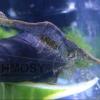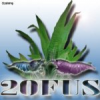Leaderboard
Popular Content
Showing content with the highest reputation on 10/12/14 in all areas
-
Oh oh, I have a possible solution for that. Where algae has grown in between our prized plants. Where manual removal is too difficult, and futile cause the algae just grows back, and where spot dosing excel/glut/Dino spit would kill sensitive plants like mosses, pellia or fissiden. I have mini pellia that had stag horn and BBA growing through it. I have managed to clear it out/eradicate/kill the algae within 3days, without killing the mini pellia. Yes it might be too late for you now, but it could be useful for next time. Want to know how?? Like this post, and if I get enough interest, I will write a full review article. Otherwise I won't bother with an article.3 points
-
1 point
-
Increasing surface agitation clears this film1 point
-
Those are some great ideas. Didn't know about the H2O2. Add that to the list of useful things H2O2 can be used for.1 point
-
I lined one of my bigger nets with an old muslin baby wrap I had stashed away in the back of the linen press and kept skimming it across the top 1/4 of the tank to catch all the fine bits of gunk and it cleaned up the oil film too. I had to do it a few times but eventually got it all.1 point
-
Heard spraying oil films with H2O2 will get rid of it. The paper towel works too.1 point
-
You can clear the oil on surface by placing a paper towel on the surface it absorbs it1 point
-
Thanks for the link to the article. I read it. It's essentially an article to prove that muscle necrosis could be consistently reproduced and, confirming that the disease has an infectious etiology. They succeeded in this trial. Which means they could reproduce the disease, and confirm it is infectious. There is nothing in this paper to suggest there is a cure. The paper however, does mention that there is a non-inflammatory and an inflammatory versions of Muscular Necrosis. The non-inflammatory condition possibly caused by environmental changes such as sudden changes in temperature, salinity or dissolved oxygen. The inflammatory condition being caused by a pathogen (bacterial or viral). Although they did not see any casualties in their short 4-5 week study, this is quite different in the shrimp farms where casualties are seen. And certainly different to the dwarf shrimps we keep. Being smaller then commercially farmed shrimps, the dwarf shrimps will see casualties in a shorter timespan. Unfortunately, this article adds nothing to what we already know. There is no cure yet. When the issue is visible, it is already usually too advanced for a full recovery. Not impossible, but certainly difficult. Isolate the infected shrimp, and correct any environmental issues like temperature, water parameters, and oxygen levels - this still remains as the only possible action.1 point





